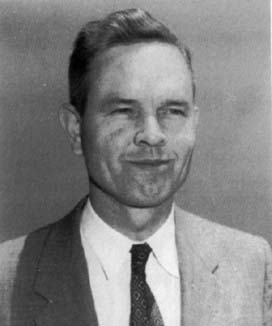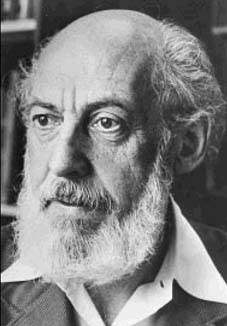<Back to Index>
- Mathematician Norman Earl Steenrod, 1910
- Mathematician Samuel Eilenberg, 1913
PAGE SPONSOR

Norman Earl Steenrod (April 22, 1910 – October 14, 1971) was a preeminent mathematician most widely known for his contributions to the field of algebraic topology.
He was born in Dayton, Ohio, and educated at Miami University and University of Michigan (A.B. 1932). After receiving a master's degree from Harvard University in 1934, he enrolled at Princeton University. He completed his Ph.D. under the direction of Solomon Lefschetz, with a thesis titled Universal homology groups. He held positions at the University of Chicago from 1939 to 1942, and the University of Michigan from 1942 to 1947. He moved to Princeton University in 1947, and remained on the Faculty there for the rest of his career. He died in Princeton.
Thanks to Lefschetz and others, the cup product structure of cohomology was understood by the early 1940s. Steenrod was able to define operations from one cohomology group to another (the so-called Steenrod squares) that generalized the cup product. The additional structure made cohomology a finer invariant. The Steenrod cohomology operations form a (non - commutative) algebra under composition, known as the Steenrod algebra.
His book The Topology of Fibre Bundles is a standard reference. In collaboration with Samuel Eilenberg, he was a founder of the axiomatic approach to homology theory (Eilenberg – Steenrod axioms).

Samuel Eilenberg (September 30, 1913 – January 30, 1998) was a Polish and American mathematician of Jewish descent. He was born in Warsaw, Russian Empire (now in Poland) and died in New York City, USA, where he had spent much of his career as a professor at Columbia University.
He earned his Ph.D. from University of Warsaw in 1936. His thesis advisor was Karol Borsuk. His main interest was algebraic topology. He worked on the axiomatic treatment of homology theory with Norman Steenrod (whose names the Eilenberg – Steenrod axioms bear), and on homological algebra with Saunders Mac Lane. In the process, Eilenberg and Mac Lane created category theory.
Eilenberg was a member of Bourbaki and with Henri Cartan, wrote the 1956 book Homological Algebra, which became a classic.
Later in life he worked mainly in pure category theory, being one of the founders of the field. The Eilenberg swindle (or telescope) is a construction applying the telescoping cancellation idea to projective modules.
Eilenberg also wrote an important book on automata theory. The X-machine, a form of automaton, was introduced by Eilenberg in 1974.
Eilenberg was also a prominent collector of Asian art. His collection mainly consisted of small sculptures and other artifacts from India, Indonesia, Pakistan, Nepal, Thailand, Cambodia, Sri Lanka and Central Asia. In 1991 - 1992, the Metropolitan Museum of Art in New York staged an exhibition from more than 400 items that Eilenberg had donated to the museum, entitled The Lotus Transcendent: Indian and Southeast Asian Art From the Samuel Eilenberg Collection".